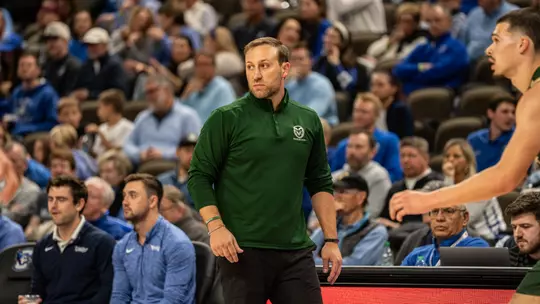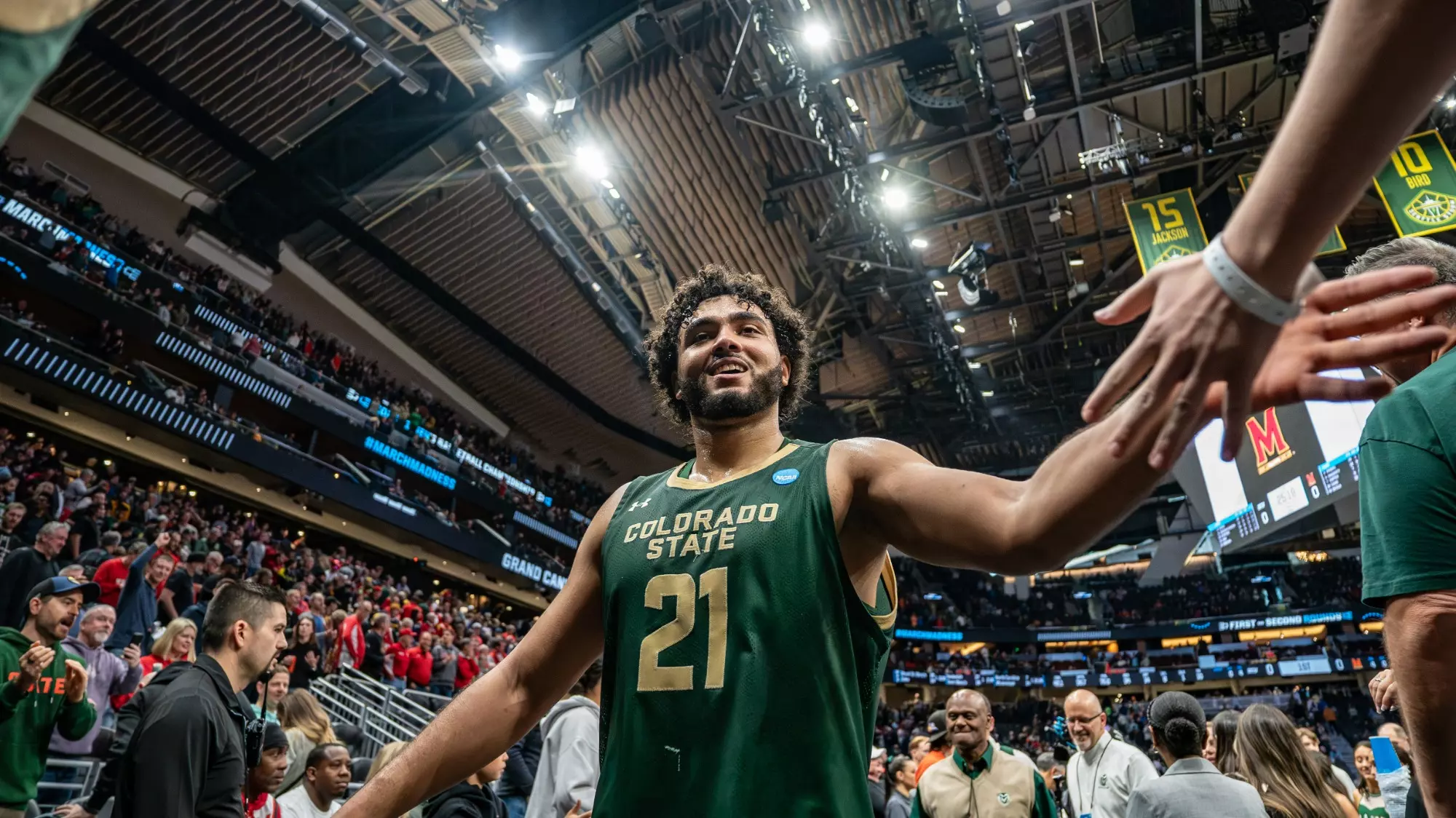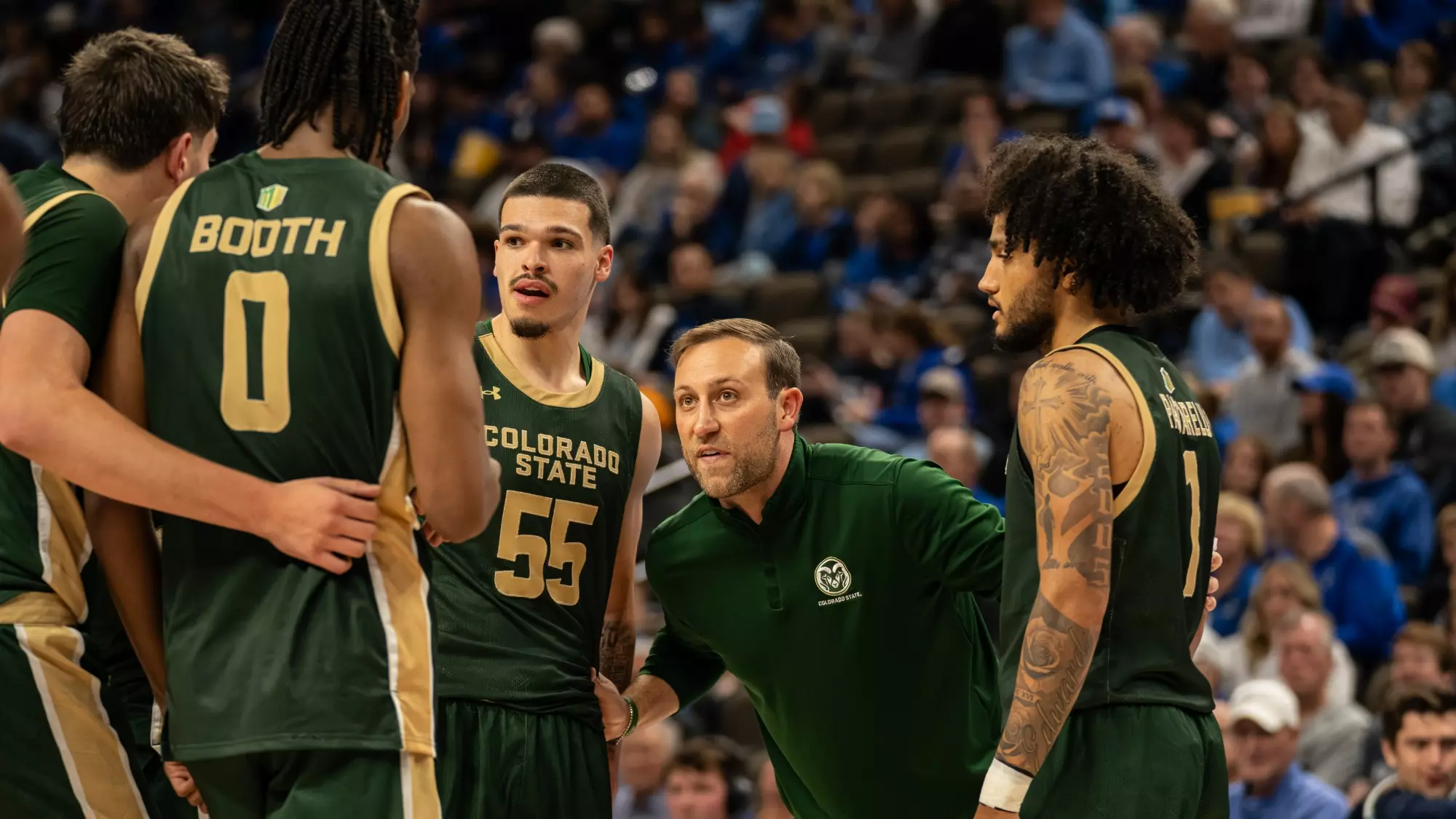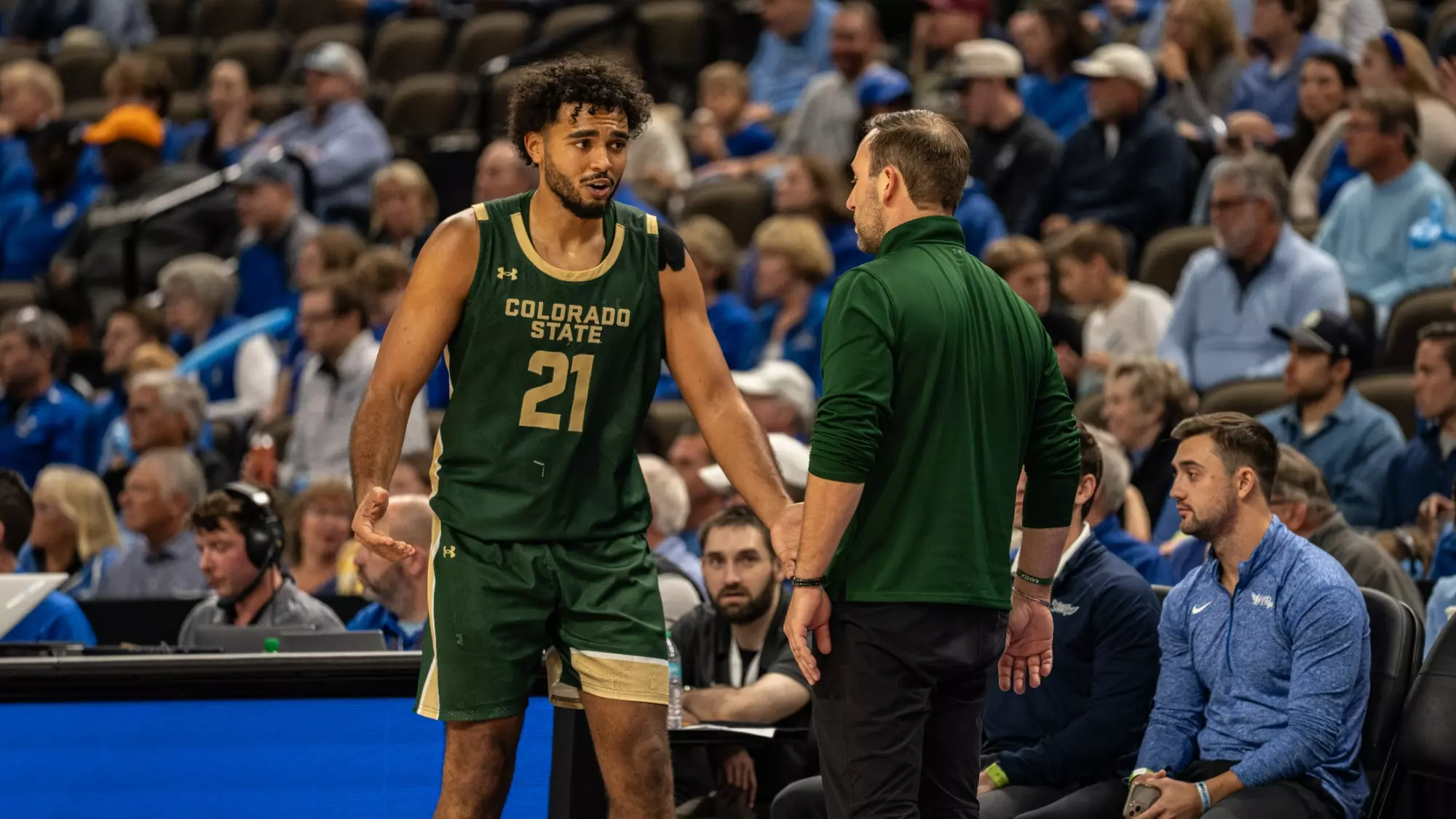
Something Familiar Still Lingers
Beneath the surface of change, CSU basketball’s standard endures
Liv Sewell
The sounds are the same.
Shoes squeaking, coaches shouting, the steady rhythm of basketballs echoing off Moby’s walls. But something about this year feels different.
A new head coach. Eight new faces. A new chapter which somehow seems wholly similar. An energy inside Colorado State’s practice gym hums with something familiar, something carried over.
It’s the same standard, the same drive that’s defined CSU men’s basketball for years: finishing every possession, fighting for every rebound and holding each other accountable. In a new era of college basketball, that’s what they want to be known for—not just change, but continuity with purpose.
Familiar faces are still present, just in new roles. Ali Farokhmanesh steps into the head coaching role, Rashaan Mbemba is now the most experienced Ram on the floor, and Kyle Jorgenson is no longer the freshman patiently waiting on the bench.
New players seem at home, though, and that was part of the plan from the start.
Farokhmanesh and his staff carefully built a class of big names which fit the program’s culture. It shows in the way the newcomers and returners banter with each other while they stand behind the post.
“I think we did a good job in the portal with the guys,” Farokhmanesh said. “It all fits. I really don't care what the rankings say when someone puts your transfer portal class in a list or whatever it is. They fit who we are. And I think there's not a lot of people outside of the program who understand that fit better than us.”
The quiet defiance Niko Medved built into this program still lingers under the new regime. The gym feels sacred, carrying the same beat, now with a slightly different tempo.
Returning players clap hands and shout instructions, guiding the new faces as they slide into lanes, cut to the basket and sink shots. Every drill is measured, every pause purposeful, every huddle a reminder of the shared standard.
Alumni who came back to the gym in the summer reinforced that continuity. Players like Nique Clifford, John Tonje and David Roddy dropped in, not for personal gain, but to support a culture they helped create. Their presence reminded the current roster that CSU basketball is bigger than any single season or player.
“I think it was the coolest when John Tonje came back,” Brandon Rechsteiner said. “It’s a dude who left, who transferred, but still came back. So, it just says a lot about how genuine everything is.”
The gym hums with a sense of belonging. CSU basketball seems to be something you never really leave.
The culture, values and standards aren’t just words on a poster but carried forward by the players, past and present. The scrape of sneakers, the slap of a ball on the hardwood, the quick exchanges of voices all become part of a new and developing story.
“I think what showed the most is the things Ali said while recruiting them,” Mbemba said. “He would talk about the program and the goal of the team to everybody. There’s a reason why those people in the NBA or people who have been playing overseas for years now came back for that short period of time just to see the guy who told them the same thing. It just reinforces Ali’s character as a coach.”
They fit who we are. And I think there's not a lot of people outside of the program who understand that fit better than us.Ali Farokhmanesh
When thinking “new,” one automatically thinks “replaced.” But in this case, reinterpreted seems like the better choice. Culture never leaves; it folds in on itself, refining new responsibilities. The new era is about adapting those responsibilities to the current roster and the challenges they face.
And one of those responsibilities falls on the shoulders of Rechsteiner, a guard. His role is to compete relentlessly. The responsibility is tangible, but so is the pride in carrying it.
“I’m willing to compete every time I get on the floor,” Rechsteiner said. “I want to and can make up a lot of shots.”
Mbemba has transitioned into one of the more experienced voices on the floor. He holds others accountable while maintaining the standards set by his predecessors.
Leadership here isn’t about seniority; it’s about understanding what it takes to sustain a program that wins. Every player’s contribution matters whether they’re starting or coming off the bench.
“I’m a junior, so I’m a little older,” Mbemba said. “We’ve got a lot of juniors and sophomores, and I think it’s unique that we need sophomores to step up as like leaders too. I mean, some of our sophomores are also those people who've been here since last year. So, it's a little different. But it also brings like a young energy to it. If you've got a standard of leaders that are basically sophomores, you have more people wanting to lead.”
Leadership—regardless of position or class year—reflects the depth of the roster and its ability to handle challenges.
Flexibility on the court depends on trust and a shared understanding that the team’s success always outweighs individual performance. Every player has a role and every role matters.
“This is probably one of the deepest teams we've had, which is a strength and a weakness, right?” Farokhmanesh said. “If everyone doesn't buy into their roles or believe in themselves it doesn’t work. I mean, you have to buy into the whole group and sometimes that means it's not your night. It's someone else's night. And how do you stay ready? How do you stay positive through those moments? But that's the strength of this team, we do have so much depth, but how do we use it and then how do we accept it?”
In that context, measuring success against other programs becomes secondary. National rankings, preseason polls and outside comparisons can distract or even discourage a team.
The real competition is internal, seeing how far the roster can go collectively to elevate their own standard, possession by possession. Because, at the end of the day, it’s all noise.
“My first year we were being ranked in the top 25 and all that,” Mbemba said. “And then we didn’t win the conference or anything. The second year we were seen as this mediocre team with no high expectations. We ended up winning the conference tournament and getting a nice run in the NCAA tournament. So, I think that just shows all those narratives that people have are basically not worth anything. Because at the end of the day, me and my teammates are going to be on the court everyday practicing.”
Early scrimmages and the recent loss at Creighton have been valuable. The team has learned to adjust to high-pressure moments, communicate quickly and trust the instincts of players they’ve met just months ago.
Because as the team realized last year, every mistake is a lesson, and every successful play reinforces the growing cohesion.
“I feel like early on we got a tight bond off the court,” Rechsteiner said, “And now, it’s just kind of trying to put that on the court. I mean it looked pretty good during our scrimmage, but we got a good bit of way to go.”
So, it all goes back to the practice court.
Early morning or late night, it all counts towards something. A dedication which is now presenting itself as a part of the team’s DNA.
Because each pass, pivot and sprint is a small rehearsal for bigger moments, ones that define what a culture means to a program. In this case, leadership isn’t about who’s the loudest or the oldest but who elevates those around them and trusts that the work they do today shapes tomorrow.
So yes, it’s new—the faces, the titles, even the storylines. But when the lights go on and Moby starts to shake, it’ll still sound a lot like it always has.
Support Colorado State Athletics: Tickets | Ram Club | CSU NIL Marketplace





